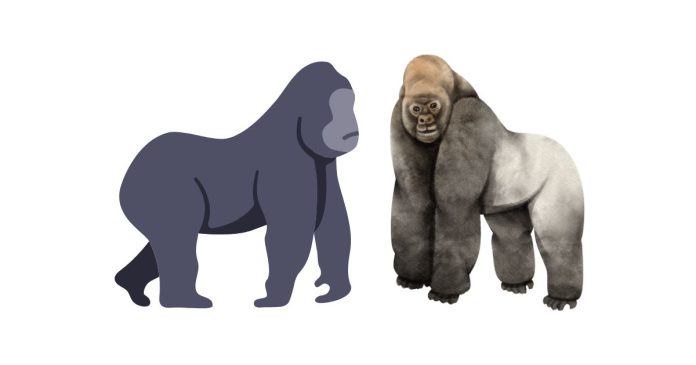The lowland gorilla is one of the most fascinating and intelligent animals on the planet. As a close relative to humans, gorillas are often the subject of both scientific study and conservation efforts. But do you know the scientific name of the lowland gorilla? In this blog post, we’ll explore the scientific classification of this remarkable species and why understanding its name is important.
Scientific Classification of the Lowland Gorilla
The scientific name for the lowland gorilla is Gorilla gorilla. This name is derived from the genus Gorilla, which is shared by all gorilla species, and the species name, gorilla, indicating this particular subspecies of gorilla. There are two main types of gorillas—western gorillas and eastern gorillas—and the lowland gorilla belongs to the western gorilla group.
The full classification for the lowland gorilla is as follows:
- Kingdom: Animalia
- Phylum: Chordata
- Class: Mammalia
- Order: Primates
- Family: Hominidae
- Genus: Gorilla
- Species: Gorilla gorilla
Two Subspecies of the Lowland Gorilla
Within the species Gorilla gorilla, there are two subspecies:
- Western Lowland Gorilla (Gorilla gorilla gorilla): This subspecies is found in the rainforests of central Africa, particularly in countries like Cameroon, Gabon, and the Republic of Congo.
- Cross River Gorilla (Gorilla gorilla diehli): This subspecies is found in a very limited area along the border between Nigeria and Cameroon. It is critically endangered due to its small population size and habitat loss.
Characteristics of the Lowland Gorilla
The lowland gorilla is a large, powerful primate known for its impressive physical strength and social behavior. Here are some of the characteristics that define this species:
- Size: Adult male gorillas can weigh between 300 to 500 pounds and stand around 5.5 to 6 feet tall when upright.
- Diet: They are primarily herbivores, feeding on fruits, leaves, stems, and bamboo. They occasionally consume insects.
- Social Structure: Gorillas are highly social animals and live in groups known as troops or bands. These groups are typically led by a dominant male, known as a silverback, who is responsible for the safety and leadership of the group.
- Habitat: Western lowland gorillas live in dense forests and swamps in central and western Africa. They are adapted to a life in the trees and on the forest floor.
Why the Scientific Name Matters
Understanding the scientific name of a species is important for several reasons:
- Conservation: The scientific name helps to accurately identify and distinguish species. The lowland gorilla, for instance, is critically endangered, and knowing its scientific classification helps conservationists track population numbers and implement protective measures.
- Scientific Study: Properly classifying species allows researchers to study the genetics, behaviors, and ecosystems of animals in detail. This knowledge can be applied to improve their care in captivity or protect their natural habitats.
- Global Communication: Scientific names are universal, providing a common language for scientists, conservationists, and animal lovers worldwide. While common names can vary by region or language, the scientific name ensures clear and consistent communication.
Conservation of the Lowland Gorilla
The lowland gorilla is listed as critically endangered by the International Union for Conservation of Nature (IUCN). The primary threats to its survival include:
- Habitat loss: Deforestation and the destruction of rainforests for agriculture and logging.
- Poaching: Gorillas are hunted for bushmeat, and their infants are sometimes captured for the illegal pet trade.
- Disease: Diseases like Ebola have had devastating impacts on gorilla populations in the wild.
Conservation efforts, including anti-poaching measures, habitat protection, and wildlife sanctuaries, are critical to ensuring the survival of the lowland gorilla.
The scientific name of the lowland gorilla is Gorilla gorilla, and it is one of two subspecies of the western gorilla. This magnificent species is a vital part of the ecosystem in central Africa and is characterized by its social behavior, strength, and large size. However, the lowland gorilla faces significant threats to its survival due to human activity, making conservation efforts more important than ever. By understanding the scientific name and the challenges these animals face, we can contribute to their protection and ensure that future generations will be able to experience these incredible creatures in the wild.


